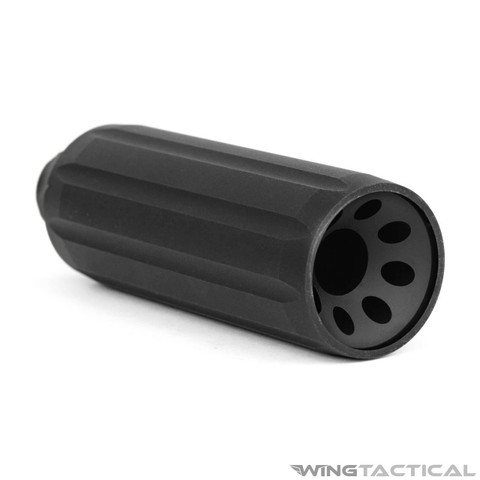Almost every semi-automatic rifle has a safety selector, which serves the essential purpose of keeping the gun safe when carrying it. Explore our collection of AR-15 safety selectors below (including ambidextrous AR-15 safety selectors) to find the perfect match for your build.

AR-15 Safety Selectors: A Customization Opportunity
The standard AR-15 safety selector is located on the left side. Though it isn't a standard part for people to consider upgrading their AR-15s, there are several aftermarket options that can offer significant advantages — especially for shooters who need an ambidextrous safety for their AR-15.
The AR-15 fire control group consists of four main parts, not including springs and retention pins: the trigger, disconnector, hammer, and safety selector.
The safety selector has a cylindrical block with a square cutout in the middle. It rests above the back end of the trigger. When the safety is engaged, the curved side of the cylindrical block makes contact with the back of the trigger and prevents it from being pressed enough to allow the disconnector and trigger sear to release the hammer and hit the firing pin.
However, when you rotate the safety switch and put it on fire, the cutout in the cylindrical block rests above the back of the trigger, which leaves enough space for the trigger to be depressed to the point where it releases the hammer and fires the rifle.

AR-15 Safety Selectors
Safety selectors are a key component of any AR platform rifle. Whether you’re building an AR-15 for home defense or an AR-10 for hunting applications, a safety can help prevent shooting injuries, support a safe resting state on the range, and enhance storage safety. But, to quickly engage the rifle to fire, you’ll need a reliable, accessible switch — that’s what the selector mechanism is for.
Wing Tactical: The #1 Source for Rifle Builders
Wing Tactical offers a wide variety of custom rifle components for your next build. Whether you’re only in the market for a safety selector or looking to completely rebuild your upper, we have everything you need to make your rifle your own.
If you have any questions about any of the parts in our collection or want to chat with a fellow firearms enthusiast, reach out to our customer service team — we’re always happy to help.
Frequently Asked Questions
Why install an aftermarket AR-15 safety selector?
The safety selector is an essential control on any AR-15. Though the stock safety selector gets the job done, there are several benefits to installing an aftermarket safety selector.
Aftermarket safety selectors are built better, they can be ambidextrous or have a short throw, and they can also add to the aesthetics of an AR-15. Some aftermarket safety selectors are made to be more ergonomic. They are easier to engage and allow shooters to operate their rifles faster.
What is an ambidextrous AR-15 safety selector?
Typically, the stock safety selector is located on the left side of an AR-15, which makes it easy for right-handed shooters to engage. However, left-handed shooters may have to shift their grip to manipulate the safety switch. An ambidextrous safety selector has a lever on both sides of the rifle, so both left and right-handed shooters can use it easily.
What is a short-throw safety selector?
On a stock AR-15, the safety selector has to be rotated a full 90 degrees to move it from “Safe” to “Fire,” whereas a short-throw safety selector may only need to be moved 45 degrees. This allows the shooter to flip the safety selector much faster and easier, allowing them to get their first shots more quickly when the rifle is carried in the “Safe” position.
Why is my safety not working on my AR-15?
If you installed the safety selector yourself, there may be a misalignment between the cylindrical block (which prevents trigger movement, mechanically preventing the gun from firing). Consider disassembling the fire control group to evaluate the problem.
Can a safety on a gun fail?
Safeties certainly can fail. But, user error is far more prevalent than mechanical failure: knocking the selector or forgetting to toggle it to your desired position are the most common errors. You can prevent both human and mechanical errors by:
- Training – If you consistently forget to toggle the safety to the intended position, you might need more time at the range to build muscle memory. You can even practice this at home. With the rifle unloaded and pointed in a safe direction, practice toggling the safety before and after a dry fire to build unconscious competence.
- Maintenance – Like all other components, you can maintain your safety selector by cleaning it semi-regularly and replacing it per the manufacturer’s recommendations. While you don’t need to disassemble and clean the fire control group after every range session, consider doing this every time you “deep clean” the rest of the rifle components.






